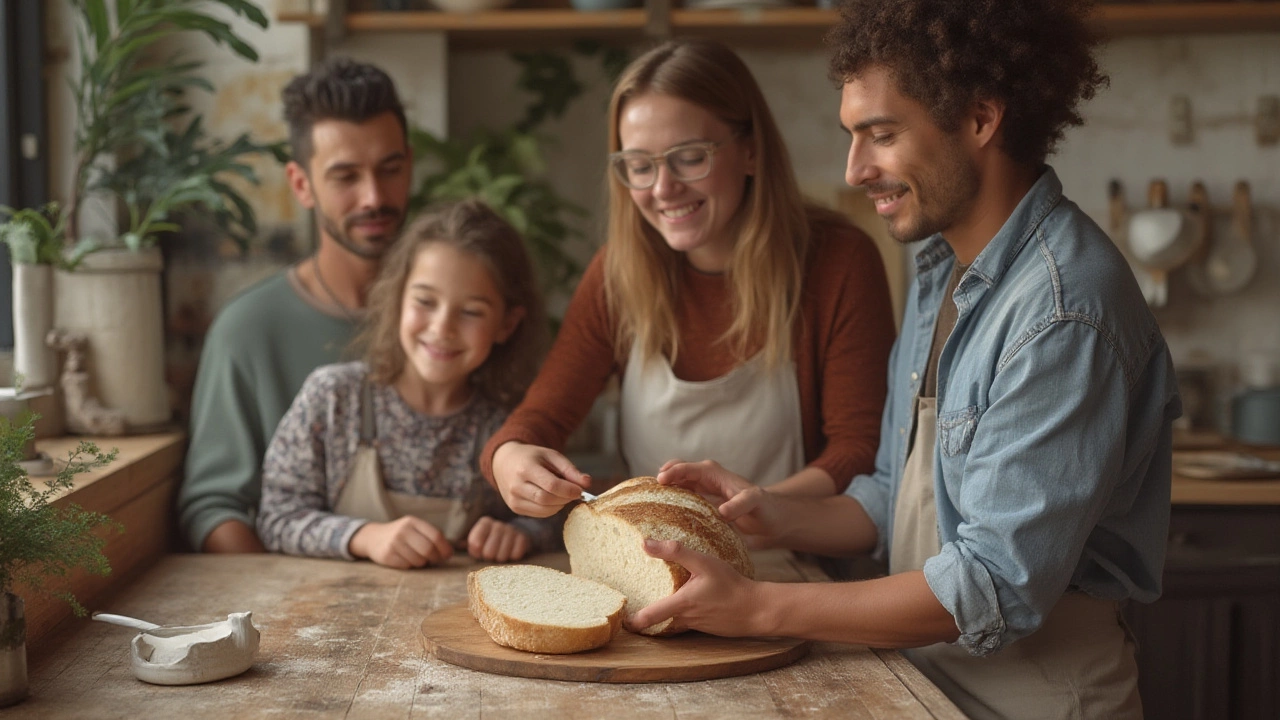
Is Sourdough Bread Gluten-Free? What You Need to Know
Diving into whether sourdough bread is gluten-free or safe for those with celiac, with real-world tips and easy-to-understand science.
If you’ve ever watched a loaf rise and wondered how it works, you’re in the right place. Sourdough isn’t magic – it’s just flour, water, and wild yeast doing their thing. Below you’ll find the most practical steps to get a starter alive, keep it happy, and bake a loaf that looks pro‑level without the fuss.
Start with equal parts flour and water – think 100 g each. Mix in a bowl, cover loosely, and leave it at room temperature. Every 24 hours, discard half and feed the same amount of fresh flour and water. By day three you’ll see bubbles, and by day five the starter should double in size within 4–6 hours after feeding. If it smells tangy and smells a bit like yoghurt, you’re good to go.
Tip: Use whole‑grain flour for the first few feeds. It gives the starter a nutrient boost and speeds up the wild yeast growth. Once the starter is active, you can switch to plain white flour for a milder flavor.
When your starter is bubbly and doubles in volume, it’s ready for a bake. Mix 500 g bread flour, 350 ml water, and 100 g starter. Let this “autolyse” rest for 30 minutes – it lets the flour absorb water and improves gluten development.
After the rest, add 10 g salt and a pinch of sugar (optional) and knead until the dough feels smooth and stretchy. A simple stretch‑and‑fold every 30 minutes for the next two hours works better than long kneading and gives an open crumb.
Shape the dough into a round, place it seam‑side up in a floured banneton or a bowl lined with a towel, and let it proof for about 3–4 hours, or overnight in the fridge for more flavor. While it’s proofing, heat your oven to 250 °C (480 °F) and put a Dutch oven inside to pre‑heat.
When the oven is hot, carefully transfer the dough into the Dutch oven, score the top with a razor blade, cover, and bake for 20 minutes. Remove the lid and bake another 20‑25 minutes until the crust is deep brown and the loaf sounds hollow when tapped.
Let the bread cool on a rack for at least an hour before slicing – this finishes the cooking inside and keeps the crumb from getting gummy.
Common mistakes? Over‑feeding your starter makes it weak, and under‑proofing leads to a dense loaf. Keep a close eye on how much the dough expands during each step, and trust the bubbles – they’re your best guide.
Now you have a solid foundation. Play with rye flour, add olives, or sprinkle seeds on top for variety. The more you bake, the better you’ll read the dough’s signals, and soon you’ll be pulling off sourdough loaves that impress friends and family.

Diving into whether sourdough bread is gluten-free or safe for those with celiac, with real-world tips and easy-to-understand science.